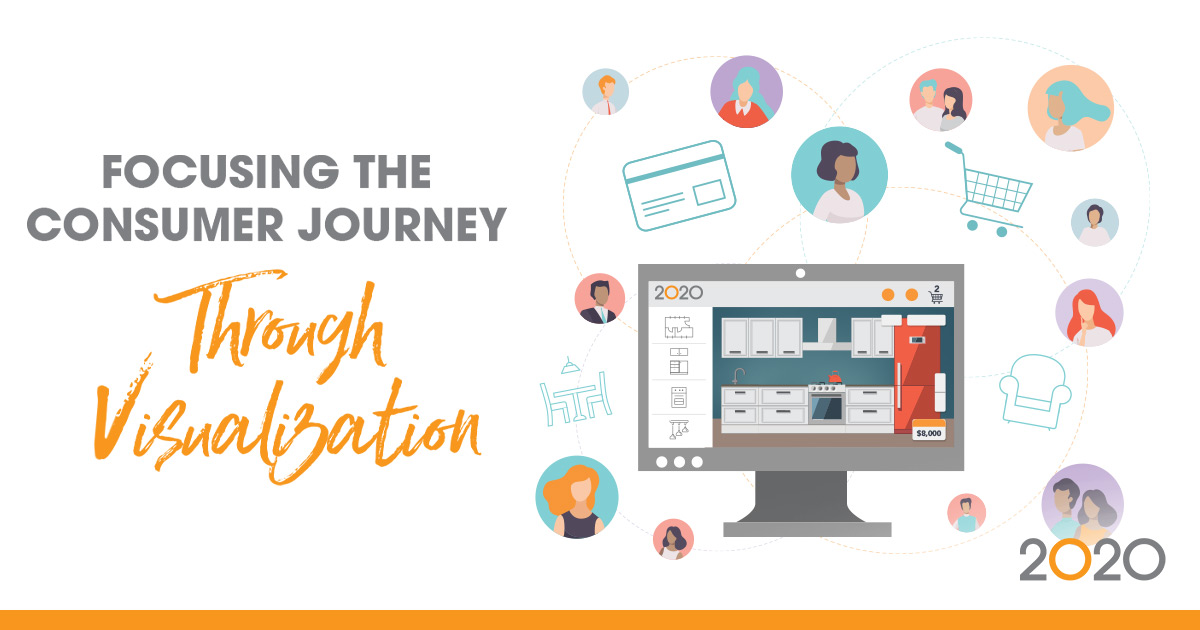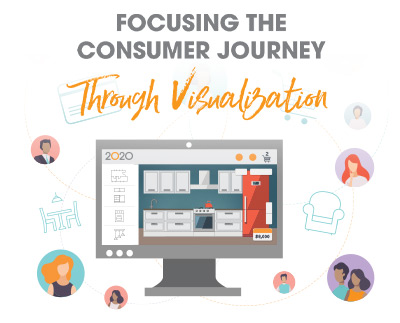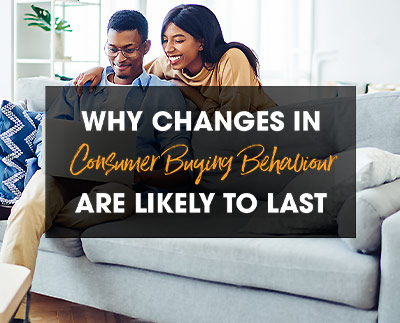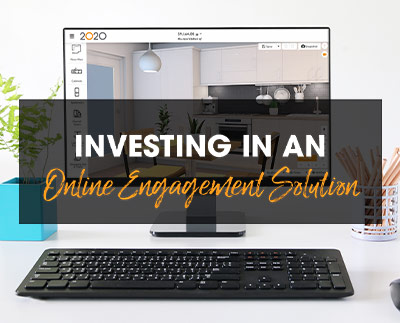
Over these past few years, we’ve seen the consumer journey traverse a few different paths. From the traditional model of foot traffic inside a store leading to sales, to online window shopping driving trips to physical stores, to pandemic-focused online buying, there are now many paths that a consumer can take to purchase what they need to reimagine, remodel and renovate their homes.
For as many consumers as there are that have fully embraced online shopping, there are just as many that find it both overwhelming and underwhelming at the same time.
Let’s take a look at why this might seem like a contradiction at first, and then how this situation can be turned into an opportunity for retailers, designers and manufacturers.
Too many options
For some homeowners, the decision to make over or remodel a room is really just the first decision in a string of many that need to be made. There are many critical questions to consider - from when to start, to what the design should look like, to what colors should be used, to who they should buy from and whether they’ll do it themselves or hire someone - and each of those bring with it their own level of stress.
When a consumer at this stage shops online for ideas and inspiration, there are already dozens of questions swirling around their brains. They’re looking for answers and guidance, not chaos.
Unfortunately, many retailers and the like don’t understand this. Their focus is on making the greatest number of choices available online instead of focusing on how they can help the consumer. It’s great to have choices available to review, but when those choices are just “on the website” with little thought given to the consumer journey and buying experience, it can appear as just another headache to a stressed consumer, causing them to turn away from moving further, or to seek out a competitor that offers a better experience.
Not enough assistance
Ability to speed and direct the consumer journey
Instead of overwhelming or underwhelming the consumer, you should work to capture their attention - and keep it - by focusing on the experience you’re providing consumers. Are you offering advice to the consumers after they indicate their initial needs? Are there ways built into your site that make it easy for consumers to browse potential options that they might want?
Despite the many questions they still have, these consumers are coming to your site full of information about what they want; they just don’t know how to apply it yet. This is where an immersive experience can help them - and you - to direct the consumer journey from their ideas, to a mock-up based on their preferences, to comparing options, to making a purchase (or coming in the store to do so).
- Valuable data for retailers and manufacturers
Getting this information out of the consumer, about what they’re looking for, is the key. By building an immersive customer experience into your site’s virtual showroom, you’ll be able to work with them virtually to ask specific questions, apply choices and options based on their vision, and share potential products and complimentary pieces that more closely reflect their original vision. Their data, fed through your site, can improve the chances of you showing them options they want, instead of throwing every mathematical possibility at them.
- Qualified leads for designers
As a designer, one of the benefits of working with a consumer online to visualize a space and make some choices before they purchase is that you gain an immediate understanding of what they like and dislike. This is valuable data. You can understand exactly how to help the consumer realize what their dream bathroom or kitchen looks like - because you have a place to start from. There isn’t a more textbook definition of a qualified lead.
There’s no need to re-tread styles and colors, for example, that the data already tells you they’re not interested in. You can provide recommendations (online or in-person) that match their preferences and help them hone in on what’s perfect for them, creating the perfect design - and ultimately speeding the buying decision.
3D visualizer
To bring your customer or client to the next step in the consumer journey, you need to transform the consumer’s initial vision into a visual representation that they can feel good about. By utilizing the latest in 3D visualizer tools, regardless of whether you’re a designer or a retailer, you can let them visualize your products, or your specific design, how it would look in their home.
The ability to take this next step is a powerful tool in helping consumers feel confident about the way their vision has been realized. Long gone are the days of painting several different colors on a wall and “sleeping on it.” Using the data they provide along with innovative 3D visualizer tools will often make the difference between days or weeks of trying out different options and instilling the confidence to move to the next stage of their home makeover.
In addition, the consumer will feel that you understand their needs and share via word-of-mouth how helpful you were, helping to bring future business to your store or design company.
Lending a hand goes a long way
At the end of the day, consumers enter into a home remodel or makeover with a lot of excitement and several ideas for how they want the finished product to look. It’s your job as a retailer, manufacturer or designer to help pull the details out of them and channel that excitement into the perfect end-product.
By building an experience that listens to their needs and desires and uses that data to help them visualize what’s possible, you’ll make their journey more pleasurable and effective - and improve your chances at converting them from a prospect with a head full of ideas to a customer that’s thrilled with their brand-new kitchen.
Want more content?
Delivering an Omnichannel Buying Experience
This eBook explains how to deliver an omnichannel buying experience to your clients. It includes digital planning solutions, social media impact, role of manufacturers, upselling, and more.
Related posts
Share this Post





